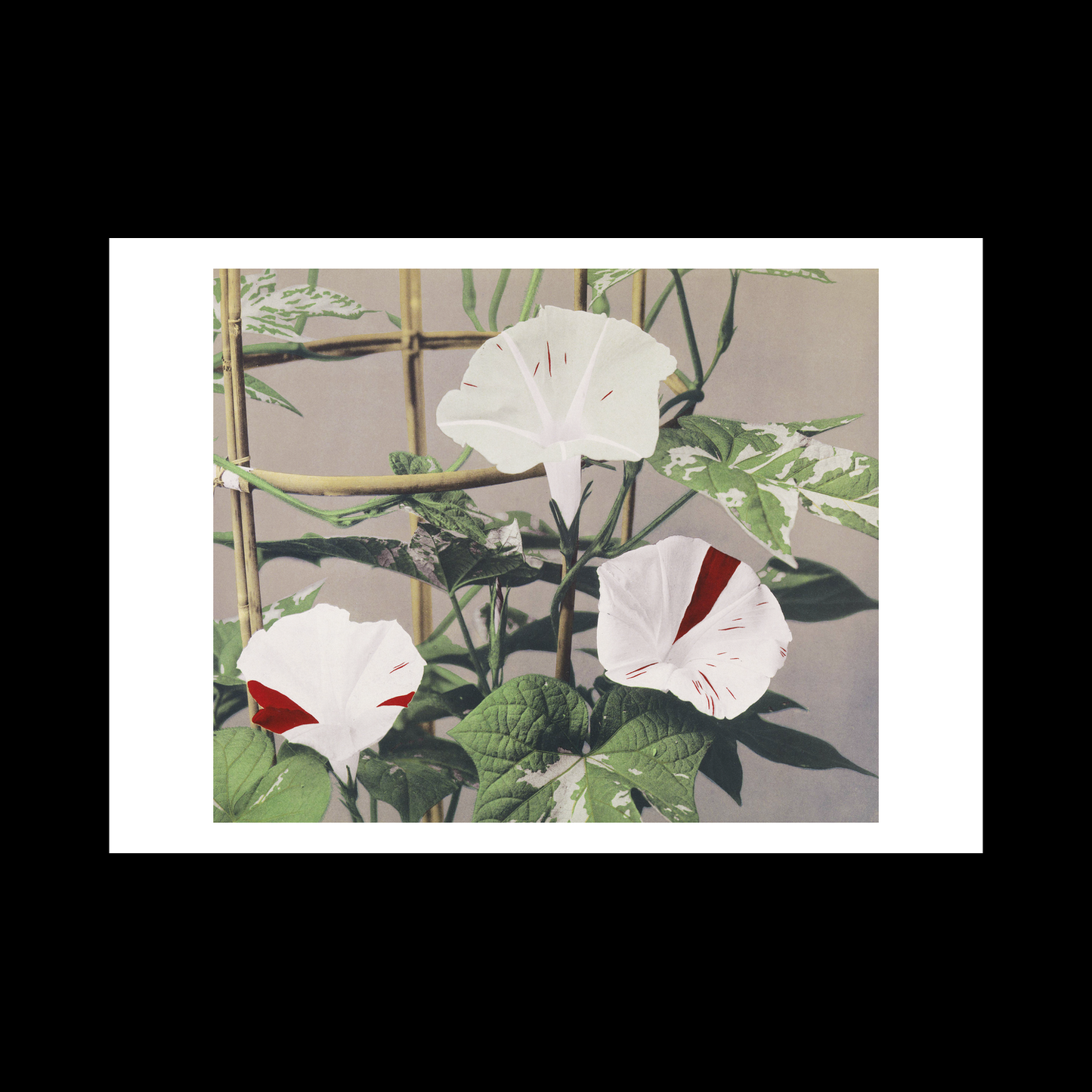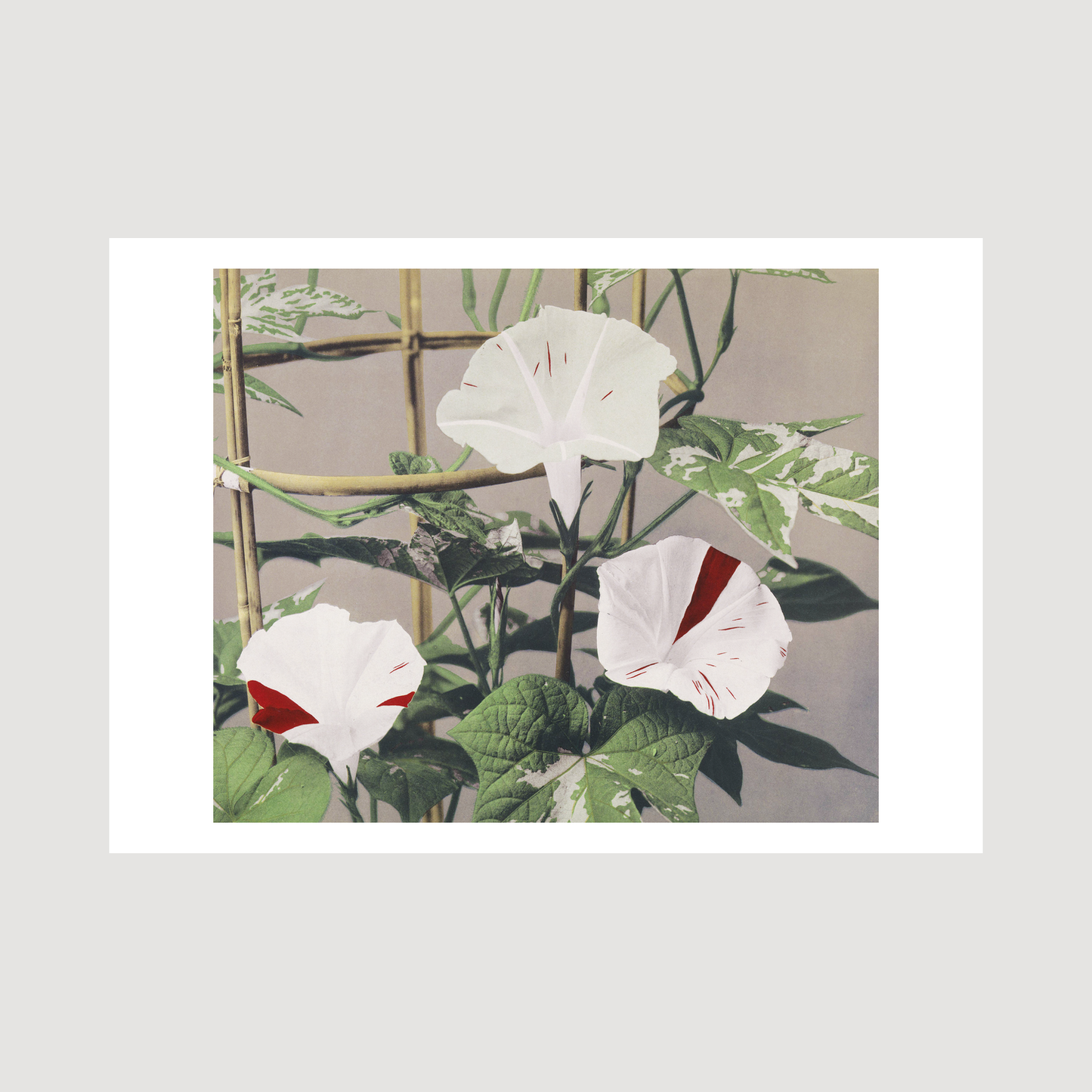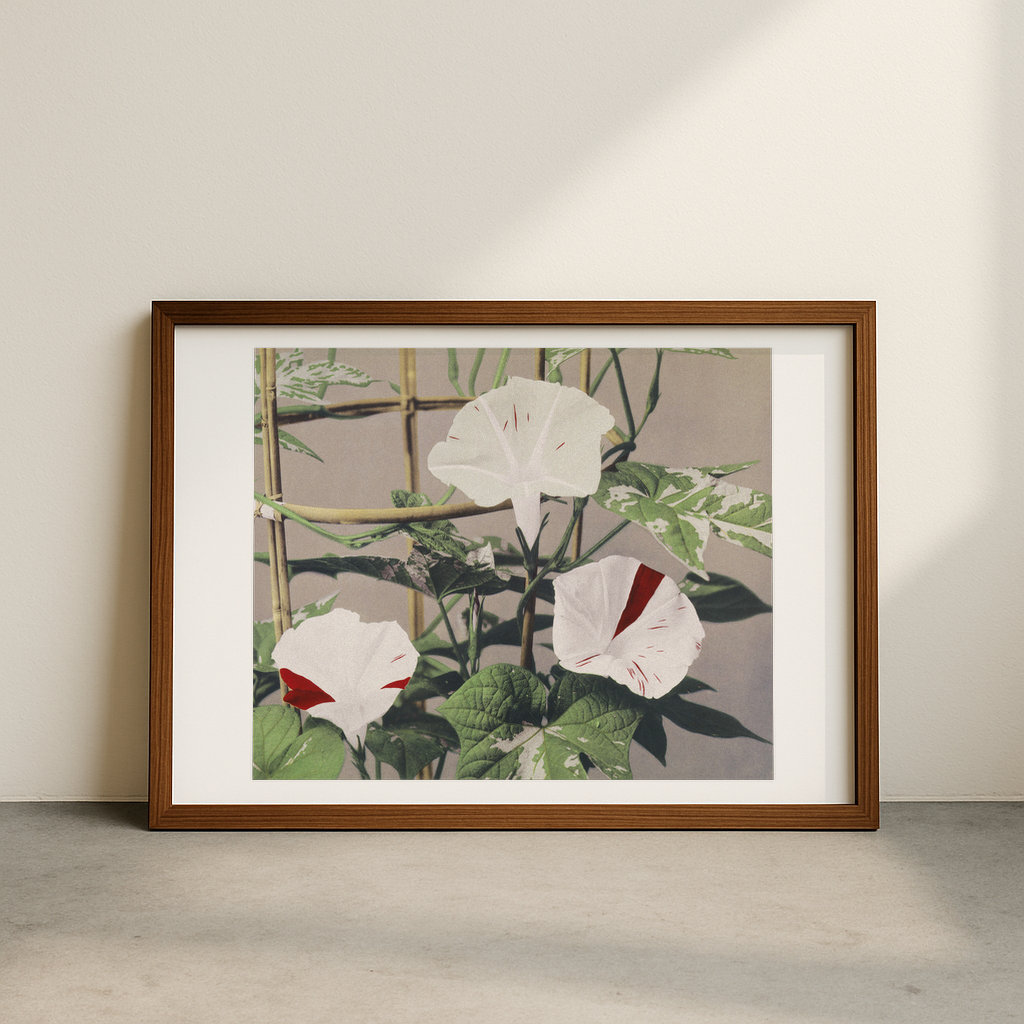1
/
of
6
Beautiful photomechanical prints Striped Bindweed
Beautiful photomechanical prints Striped Bindweed
Regular price
£12.45 GBP
Regular price
Sale price
£12.45 GBP
Taxes included.
Quantity
Couldn't load pickup availability
Ogawa Kazumasa's photomechanical prints of Striped Bindweed Flowers (1887-1897) showcase the delicate beauty of these climbing plants through a pioneering photographic technique. The prints capture the intricate details of the flowers' funnel-shaped blooms and distinctive striped patterns with remarkable precision, demonstrating Kazumasa's mastery of early colour photography methods in late 19th-century Japan.
As one of Japan's first professional photographers, Kazumasa revolutionised botanical photography by combining Western photographic techniques with traditional Japanese aesthetic sensibilities. His choice of bindweed as a subject reflects the Japanese appreciation for simple, everyday beauty, while his technical approach – using multiple exposure plates to achieve colour effects – was groundbreaking for its time.
The artwork is particularly significant as it represents a crucial moment in the cultural exchange between East and West during the Meiji period. Kazumasa studied photography in America before returning to Japan, where he established a photography studio and publishing company. These bindweed prints exemplify his unique ability to merge scientific documentation with artistic expression, creating botanical studies that are both technically accurate and aesthetically pleasing. The subtle gradations of colour and careful attention to the plant's natural form demonstrate why Kazumasa became known as one of Japan's most influential early photographers.
View full details
As one of Japan's first professional photographers, Kazumasa revolutionised botanical photography by combining Western photographic techniques with traditional Japanese aesthetic sensibilities. His choice of bindweed as a subject reflects the Japanese appreciation for simple, everyday beauty, while his technical approach – using multiple exposure plates to achieve colour effects – was groundbreaking for its time.
The artwork is particularly significant as it represents a crucial moment in the cultural exchange between East and West during the Meiji period. Kazumasa studied photography in America before returning to Japan, where he established a photography studio and publishing company. These bindweed prints exemplify his unique ability to merge scientific documentation with artistic expression, creating botanical studies that are both technically accurate and aesthetically pleasing. The subtle gradations of colour and careful attention to the plant's natural form demonstrate why Kazumasa became known as one of Japan's most influential early photographers.











